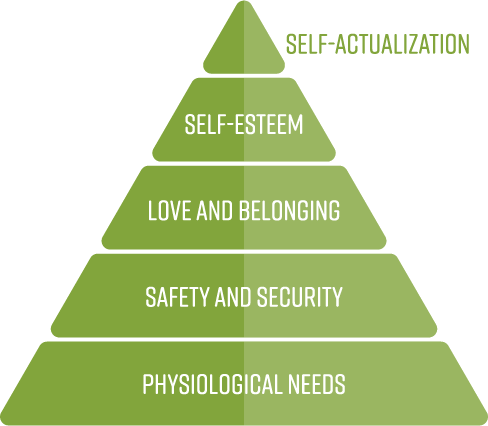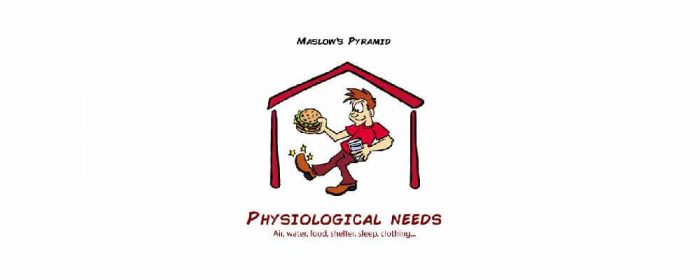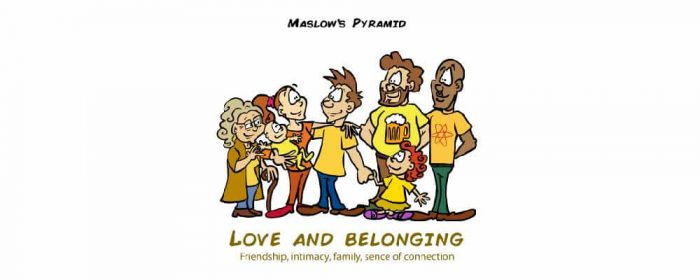Anthropology has always been a fascinating subject to the modern human as it explains a lot about where we were as a species and where we are. But we still don’t have a clear idea about the motivational factors that regulate human behavior.
This is where Maslow’s Hierarchy of Needs comes in. According to this, our behavior and actions are instigated to achieve a specific need. Let’s take a closer look at the theory.
Maslow’s Hierarchy of Needs

This concept was introduced in 1943 in a paper presented by Maslow and also in his book Motivation and Personality, which suggests that people are fundamentally inclined to fulfill their basic human needs before they move on to achieve their advanced goals.
While some of the other leading experts were focusing on problematic traits, Maslow was always learning what makes humans happy and satisfied with the choices they make in this life in addition to the activities they perform to achieve their goal.
As a dedicated humanist, Maslow always believed that humans have a primal tendency to be self-actualized which means that they’ll do whatever it takes to be all they can be in this life. To achieve these ultimate milestones, all the basic needs like food, safety, and self-esteem, etc., must be met.
To make things clearer, Maslow described 5 different levels in the Hierarchy of needs that properly explain the most basic, all the way to the most complex human needs.
Moving from the Basic to More Advanced Needs
Normally the hierarchy described in Maslow’s theory is displayed as a pyramid. The lowest levels of the pyramid are the most basic human needs we require every day. Going upwards, we would study the more advanced human needs
Starting from the bottom, we have needs like eating food, drinking water, sleeping a good night’s sleep and achieve warmth in their homes. Once these basic needs are fulfilled, humans move on to the more advanced needs that are for safety and security.
The upper-level needs, step-by-step, become more and more psychological. This includes the need for human companionship through love, friendship or an element of intimacy. If we move onwards from there, the needs become more about self-actualization.
What is the difference between Deficiency and Growth Needs?
All of the low levels needs like security, social needs, and other physiological needs are all deficiency needs that are caused by deprivation.
Taking care of these low-level needs is vital because they help in getting rid of all of the unpleasant feelings humans experience daily.
Maslow termed all of the high-level needs that are more about self-acceptance as the growth needs that do not fester because of any lack or deprivation of something but rather they are related to the desire of a human to grow and improve as a person.
Let’s now move on to the 5 different levels of Maslow’s Hierarchy of Needs.
5 levels of Hierarchy of Needs
1. Physiological Needs

When you talk about the most basic needs of humans then these are surely the physiological needs that include the very things that we need for our survival every day. Some of these are:
- Water
- Air
- Food
- Homeostasis
In addition to these, shelter and clothing are also important physiological needs. Maslow also included the need for intimacy or sexual reproduction in this level of needs because of their essential importance for the survival of the species.
2. Security and Safety Needs

As we move upwards, we find more complex needs like safety and security become the primary objective. People want their whole life to move on a planned and secured trajectory that doesn’t cause them any harm.
Some of the fundamental safety elements that humans strive for are:
- Health and wellness
- Safety against any injury
- Financial or Monetary security
Nowadays, we strive for all of these securities to bless our lives and never leave us astray. These securities include obtaining a decent health insurance plan, finding the perfect job or moving into a safer neighborhood. Together these safety needs and the physiological needs are known as the basic needs.
3. Social Needs

The social needs in Maslow’s theory include all of the things that make a person emotionally strong like a sense of belonging, acceptance, and love among one another. When we are at this level, the need for emotional interaction is the driving force behind human behavior.
Some of the things that fulfill the needs of this level are:
- Family Interactions
- Social groups
- Romantic affiliations
- Friendships
- Community groups
- Religious affiliations
4. Esteem Needs

At the 4th level, we have needs like mutual appreciation and respect for one another. When the needs at the lower level are fulfilled and we are at a Zen-place in our lives, the esteem needs start to be the driving force behind our behavior.
At this point, We become sort of addicted to the love and respect we receive from others. Why? Well, when was the last time you did anything meaningful and didn’t want your loved ones or the people around you to not recognize your efforts and congratulate you?
In addition to elements like a sense of recognition, accomplishment, and prestige, esteem needs also consist of elements like personal worth and self-esteem.
When we mash the esteem and social needs together, the result is what is known as the psychological needs of the hierarchy.
5. Self-Actualization Needs

At the very top of the pyramid are the self-actualization needs that consist of everything that a man can be and what he must become. According to Maslow:
“It may be loosely described as the full use and exploitation of talents, capabilities, potentialities, etc. Such people seem to be fulfilling themselves and to be doing the best that they are capable of doing… They are people who have developed or are developing to the full stature of which they capable.”
When people reach this level, they are very self-aware and are more concerned with self-growth and they don’t care about anything other people say about them.

